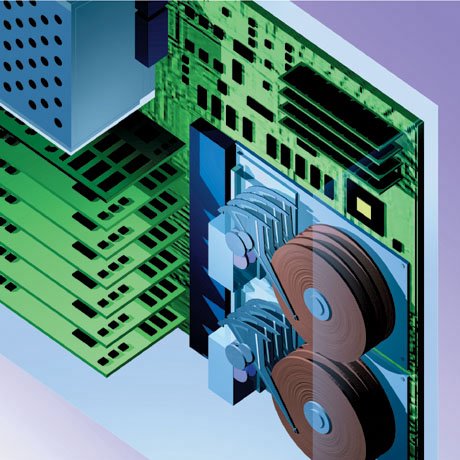
For the first time ever, the world is at your fingertips. From your computer, you can find information about anything you can name or even imagine. You can communicate with people on the other side of the world. You can set up a teleconference, tap into the resources of powerful computers anywhere on the globe, search through the world's best libraries, and visit the world's most amazing museums. You can watch videos, listen to music and share music with others, and read special multimedia magazines. You can shop for almost anything you can name. You can do all this by tapping into the largest computer network in the worldthe Internet.
The Internet isn't a single network; it is a vast, globe-spanning network of networks. No single person, group, or organization runs the Internet. Instead, it's the purest form of electronic democracy. The networks communicate with one another based on certain protocols, such as the Transmission Control Protocol (TCP) and the Internet Protocol (IP). More and more networks and computers are being hooked up to the Internet every day. Tens of thousands of these networks exist, ranging from university networks to corporate local area networks to large online services such as America Online and MSN. Every time you tap into the Internet, your own computer becomes an extension of that network.
The first section of this book is spent defining the Internet. It also examines the architectures, protocols, and general concepts that make it all possible.
Chapter 1, "What Is the Internet?" examines how the Internet runs. You'll look at who pays for the high-speed data backbones that carry much of the Internet's traffic and at the organizations that ensure that standards are set for networks to follow so the Internet can run smoothly. You'll also look at the various types of networks connected to the Internet.
Chapter 2, "How Computer Networks Send Data Across the Internet," explains how information travels across the Internet and describes how hardware, such as routers, repeaters, and bridges, sends information among networks. It also shows how smaller networks are grouped into larger regional networksand how those large regional networks communicate among themselves.
Chapter 3, "How TCP/IP Works," covers the Internet's basic protocols for communications. You'll learn a little about basic Internet jargon, such as TCP/IP (short for Transmission Control Protocol and Internet Protocol). This chapter also explains how those protocols work and how special software such as Winsock enables personal computers to get onto a network originally designed for larger computers.
Chapter 4, "Understanding the Internet's Software Structure," looks at the Internet's client/server architecture. Serversalso called hostsare powerful computers that perform functions such as delivering information or web pages, hosting databases, and handling email. A client is your own computer and the software that sits on it, such as a web browser or piece of email software. Clients request information from servers, which do the heavy-duty processing and then send the information back to the client, which displays the information.
Chapter 5, "How Internet Addresses and Domains Work," takes the mystery out of the Internet's often confusing addressing scheme. You'll learn about Internet domains and addresses and will even be able to make sense of them. More than that, you'll learn how domain servers keep track of all the locations on the Internet and translate addresses such as www.zdnet.com into Internet IP addresses such as 134.54.56.120. You'll also learn how some computers are assigned new IP addresses by special servers every time they connect to the Internet.
Chapter 6, "How Routers Work," details how the most basic piece of hardware on the Interneta routerworks. Routers are combinations of hardware and software that perform the job of ensuring that all data is sent to the proper destination. Think of routers as traffic cops of the Internet. They use the IP addresses the name servers have translated to route the data. Routers look at the addresses and then send the data to the next-closest router to the destination and so on, until the data is finally delivered. They use routing tables to determine how to route the traffic, and they can also adjust the routes as the traffic on the Internet changes, thus ensuring that the data is routed in the most efficient way possible.
Whether you're a newbie or cyberpro, this section teaches you the basics of the Internet.